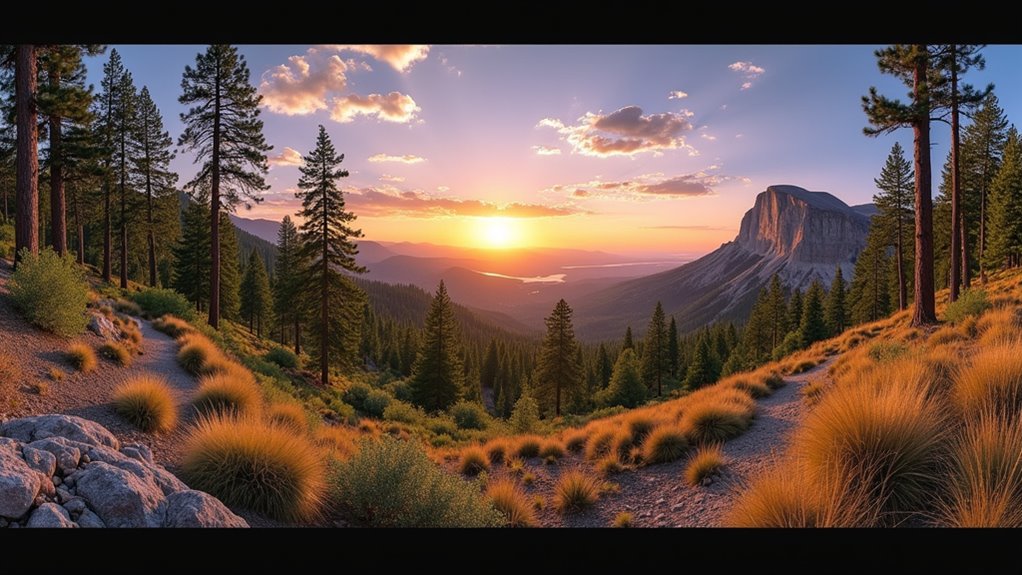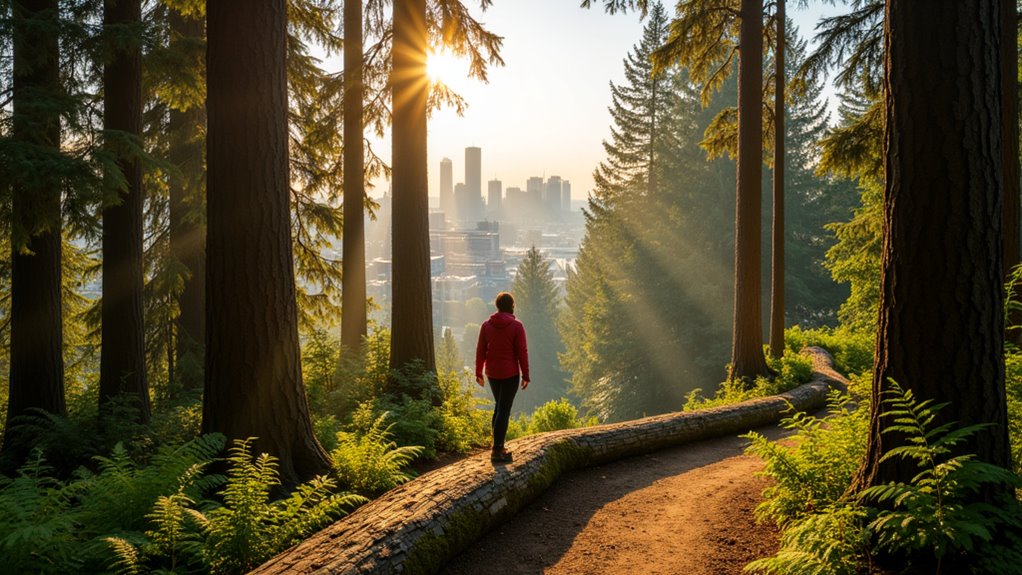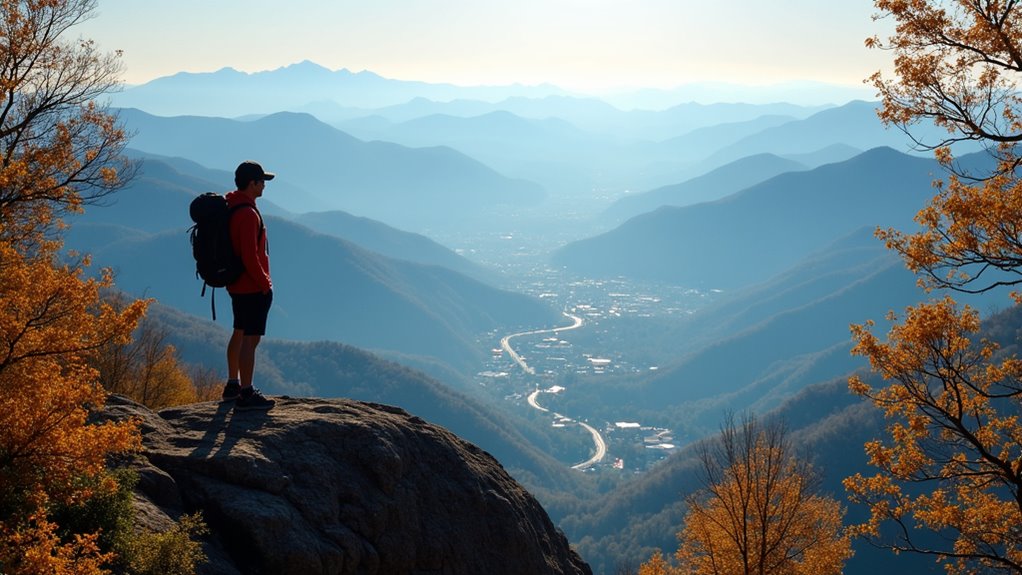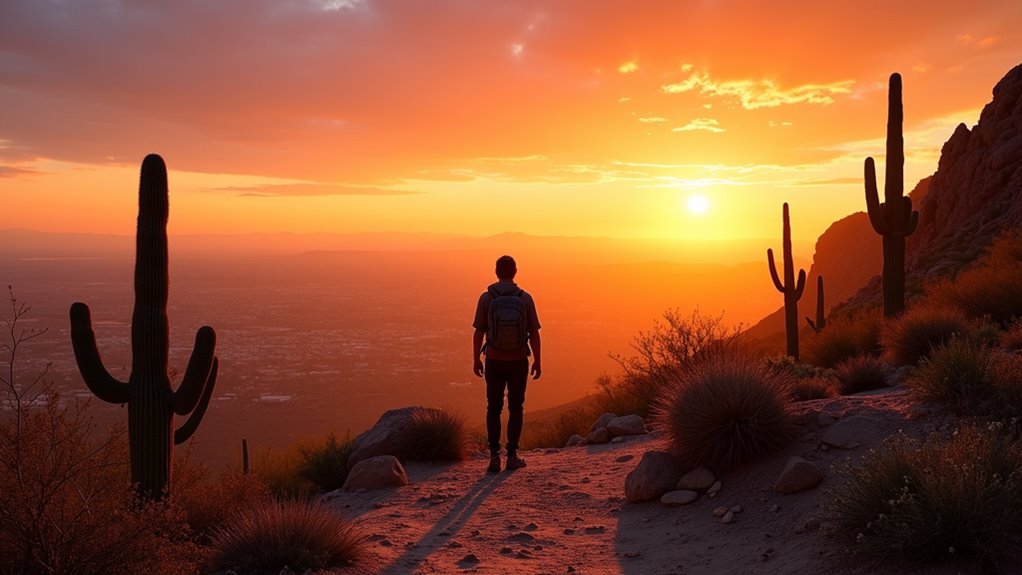Physical Address
304 North Cardinal St.
Dorchester Center, MA 02124
Physical Address
304 North Cardinal St.
Dorchester Center, MA 02124

Gear up for adventure in these six urban hiking havens, where wilderness meets city life in unexpected ways.
You don’t need to travel internationally to find world-class hiking trails. Right here in America, several cities have mastered the balance between urban amenities and outdoor adventure. Whether you’re seeking desert vistas, mountain peaks, or forest canopies, these six destinations offer remarkable hiking experiences without breaking your travel budget. From Portland’s misty trails to Tucson’s cacti-dotted paths, each city brings its own unique landscape and cultural charm to the hiking community. Let’s explore what makes these locations stand out.

While many cities struggle to balance urban development with natural spaces, Portland serves as a remarkable example of how wilderness and city life can seamlessly coexist. You’ll find Forest Park, one of America’s largest urban forests, just minutes from downtown, offering extensive trails and stunning views of the St. John’s Bridge and Willamette River. The park features hikes for every skill level, including the Wildwood Traverse, a challenging 30.2-mile trail with over 2,700 feet of elevation gain.
You can explore diverse hiking options without leaving city limits, from the challenging 10.6 km Marquam Trail to the easy 4.7 km Hoyt Arboretum Loop. Essential tips for a successful camping experience can help ensure you’re prepared for your outdoor adventures in and around Portland.
Portland’s trail system connects three counties and 24 cities, giving you nearly 800 miles of multi-use paths to discover. The city’s unique positioning means you’re never far from a forest paradise, with most trails maintaining moderate elevations below 3,000 feet, making year-round hiking accessible for all fitness levels.
From Portland’s lush forests to the striking Sonoran Desert, Phoenix offers a completely different kind of hiking paradise.
With over 200 miles of trails spanning 41,000 acres of preserves, you’ll find adventures suited to any skill level, from casual walks to challenging summit climbs like Piestewa Peak. Stay hydrated while enjoying these trails, as dehydration can be a concern in the desert environment.
Phoenix’s vast trail network offers something for all, from gentle nature walks to exhilarating mountain ascents.
You can safely explore this vast network of trails, knowing that rescue incidents are remarkably rare – just 213 cases among 3 million annual visits.
The trails showcase stunning city views and diverse desert ecosystems, all while being conveniently accessible from urban areas. As the fifth largest city in America, Phoenix maintains an impressive balance between urban development and natural preservation.
Local organizations actively maintain these paths and provide educational programs about desert conservation, ensuring you’ll have a meaningful outdoor experience.
Whether you’re photographing unique desert flora or enjoying a sunrise hike, Phoenix’s trails deliver year-round opportunities for outdoor exploration.

Nestled in the heart of the Blue Ridge Mountains, Asheville serves as North Carolina’s premier hiking destination, where you’ll discover an extensive network of trails spanning three major wilderness areas – the Blue Ridge Parkway, Pisgah National Forest, and Great Smoky Mountains National Park.
You’ll find trails for every skill level, from challenging ascents to Mount Mitchell, the highest peak east of the Mississippi, to scenic waterfall hikes at Looking Glass Falls. The 469 uninterrupted miles of the Blue Ridge Parkway offer countless opportunities to explore Southern Appalachia’s diverse landscapes.
The area’s well-maintained trails and accessible trailheads make day hiking convenient, while numerous camping facilities support extended adventures. RV Camping is a popular option for those seeking a more comfortable outdoor experience. Beyond the trails, Asheville’s vibrant arts scene and sustainable local businesses create a unique outdoor community.
Local outfitters provide gear rentals and guided tours, making it easy to explore even if you’re new to hiking or traveling light.
The towering saguaro cacti of Tucson offer a dramatic contrast to Asheville’s lush Appalachian forests, proving America’s hiking diversity. At Saguaro National Park, you’ll find trails for every skill level, from the challenging Hugh Norris Trail to the easy Signal Hill path with its ancient petroglyphs. The elevation gain of 1,227 makes Hugh Norris one of the park’s most demanding hikes.
From desert giants to mountain greenery, America’s trails showcase nature’s stunning range of hiking experiences.
For the best Tucson hiking experience:
The park’s free visitor centers provide essential trail maps and safety information, making this iconic desert destination accessible to budget-conscious explorers seeking both adventure and cultural understanding.

Spanning over 30,500 acres, Scottsdale’s McDowell Sonoran Preserve serves as America’s largest urban wilderness area, where diverse desert trails beckon both novice and experienced hikers.
You’ll find over 225 miles of well-maintained paths, ranging from ADA-accessible routes to challenging summit climbs. Essential tips for a safe and enjoyable camping adventure can help ensure your hike is both fun and secure.
The preserve’s interconnected trail network offers you stunning views of boulder-strewn peaks and desert washes while protecting the Sonoran Desert’s unique flora and wildlife. The challenging terrain includes elevations from 2400 to 3900 feet at notable peaks like Horseshoe Ridge and Drinkwater.
Whether you’re tackling the scenic Desert Park Trail or completing the Gateway Loop, you’ll encounter carefully marked paths that accommodate hikers, cyclists, and equestrians alike.
Beyond hiking, you can explore the preserve through wildlife photography, educational programs, and conservation activities.
The preserve’s proximity to urban Scottsdale makes it an accessible destination for your desert adventure, regardless of skill level.
Located where the White Mountains meet New Hampshire’s North Country, Gorham serves as a premier gateway for hikers seeking diverse trail experiences.
You’ll find everything from family-friendly paths to challenging mountain ascents, including the steepest mile of the entire Appalachian Trail along Wildcat Ridge.
Whether you’re a beginner or seasoned hiker, Gorham’s trails offer something for every skill level: Camping with your dog can be a great way to bond with your furry friend and enjoy the outdoors together.
Try the one-mile Gorham Recreational Trail for an easy, non-motorized route perfect for families.
Challenge yourself on the AT-Centennial Trail, descending over 2,500 feet with dramatic mountain views.
Explore the extensive network of multi-use trails for hiking, biking, and trail running.
Named 2020’s Best Two-Wheeled Adventure by NH Magazine, Gorham continues to grow as one of New England’s most accessible outdoor destinations, with trails ranging from 2.18 to 8.4 kilometers. The area’s trail system is overseen by the Gorham Conservation Commission, ensuring well-maintained paths for outdoor enthusiasts.
Whether you’re scaling Camelback Mountain in Phoenix or wandering Portland’s mossy trails, America’s hiking cities offer unforgettable outdoor experiences on any budget. Just ask Sarah Chen, who moved to Tucson last year and found healing on the Douglas Spring Trail after losing her job. From free urban paths to affordable national park passes, you’ll discover that these six cities make world-class hiking accessible to everyone, regardless of your experience or background.